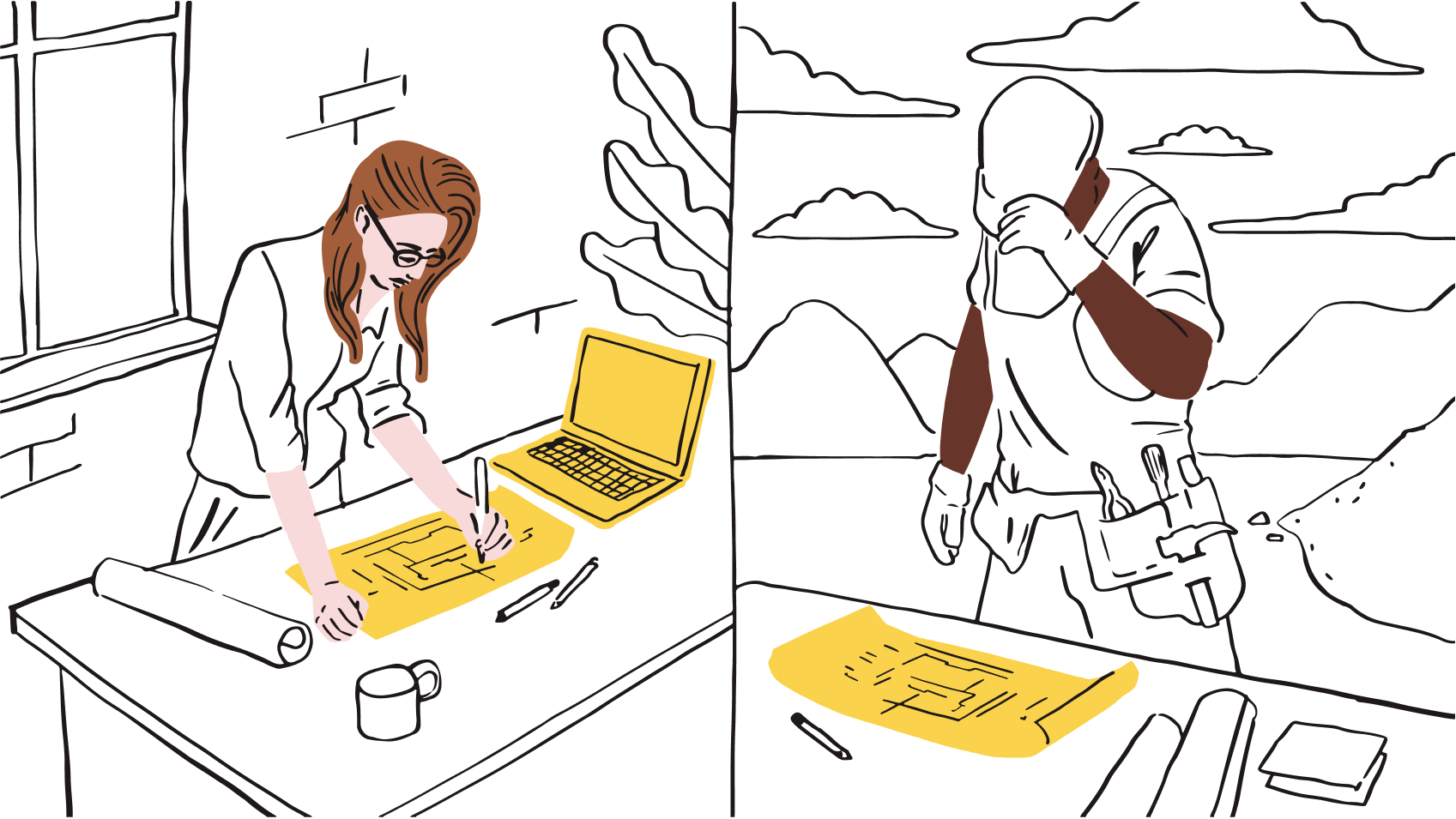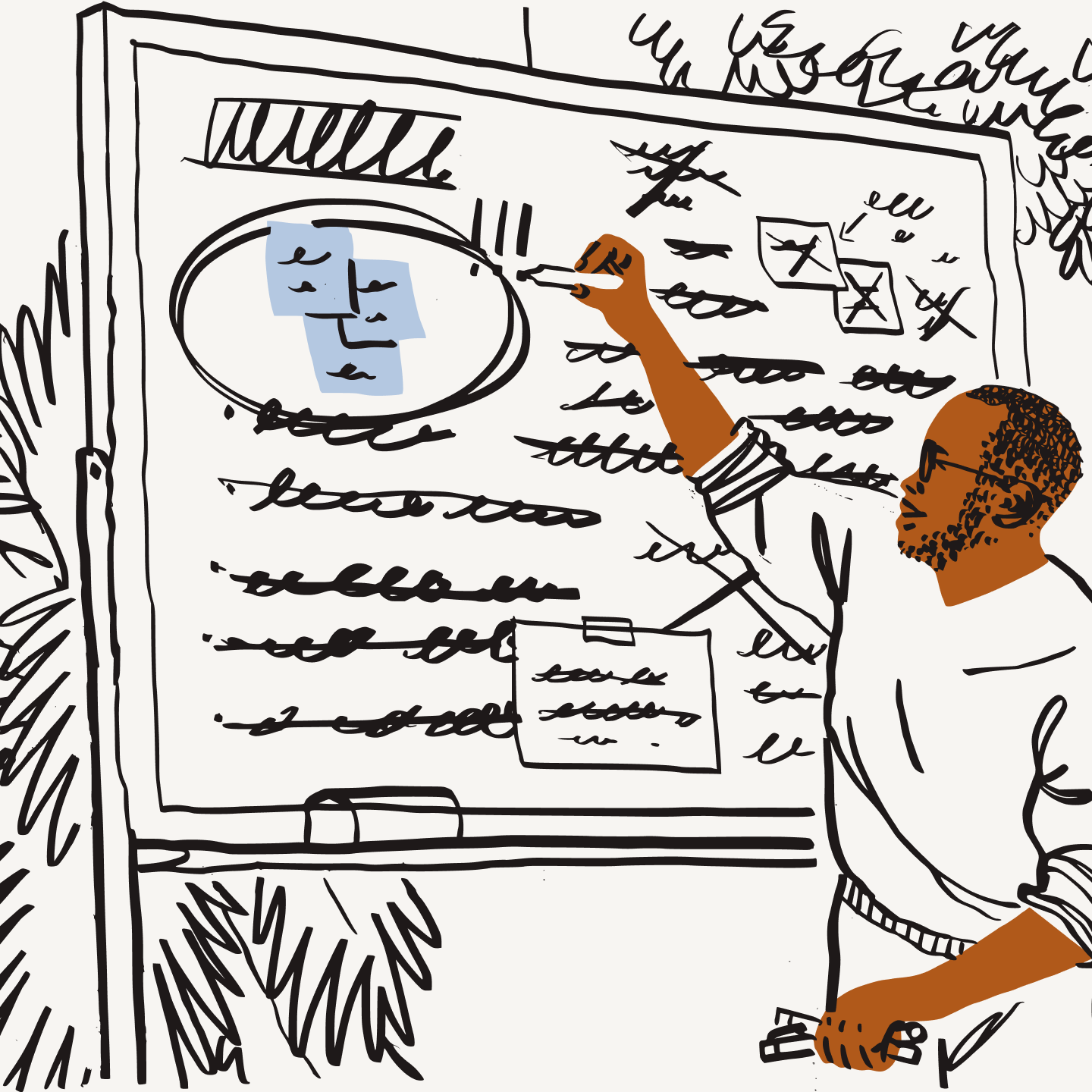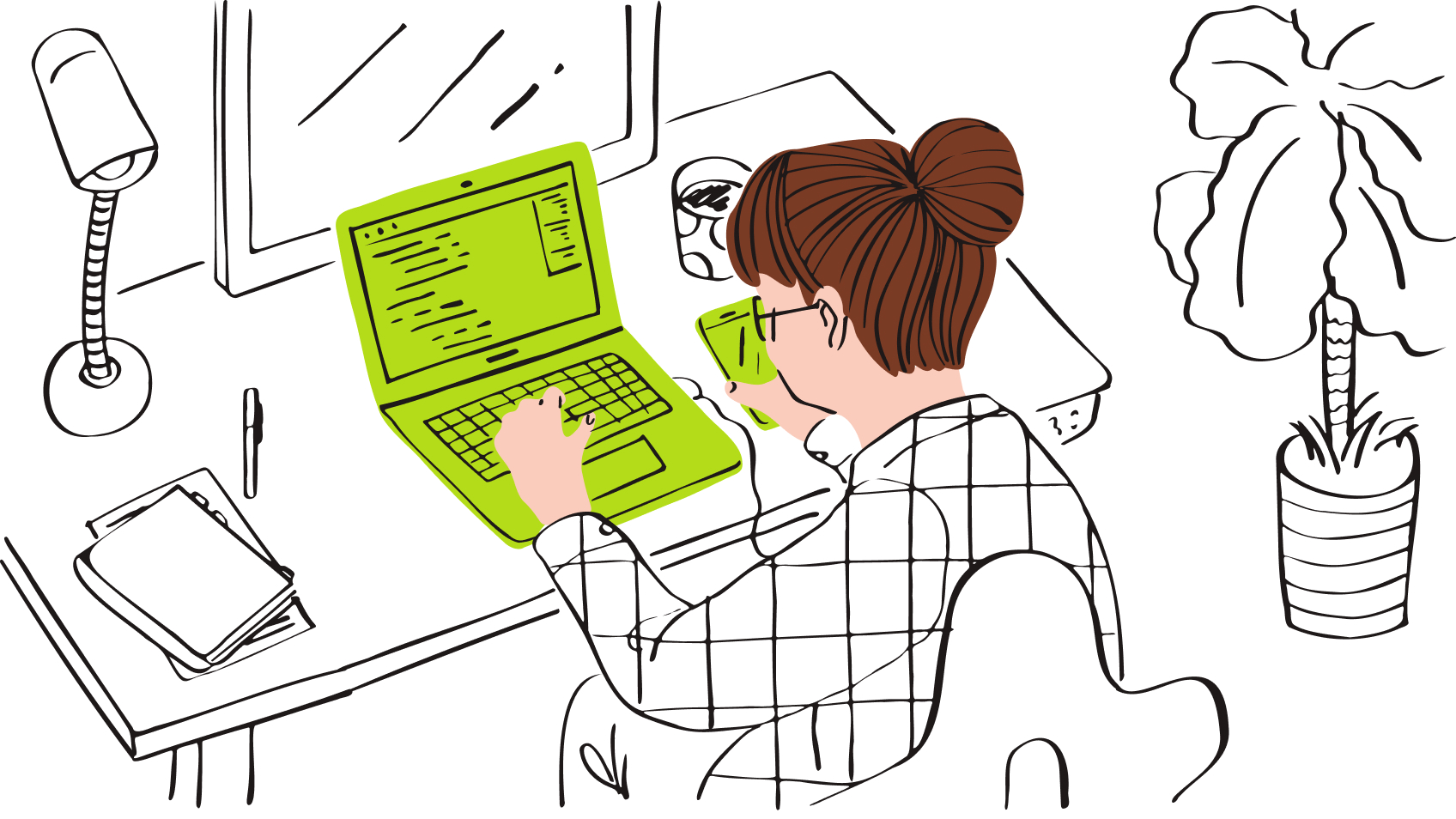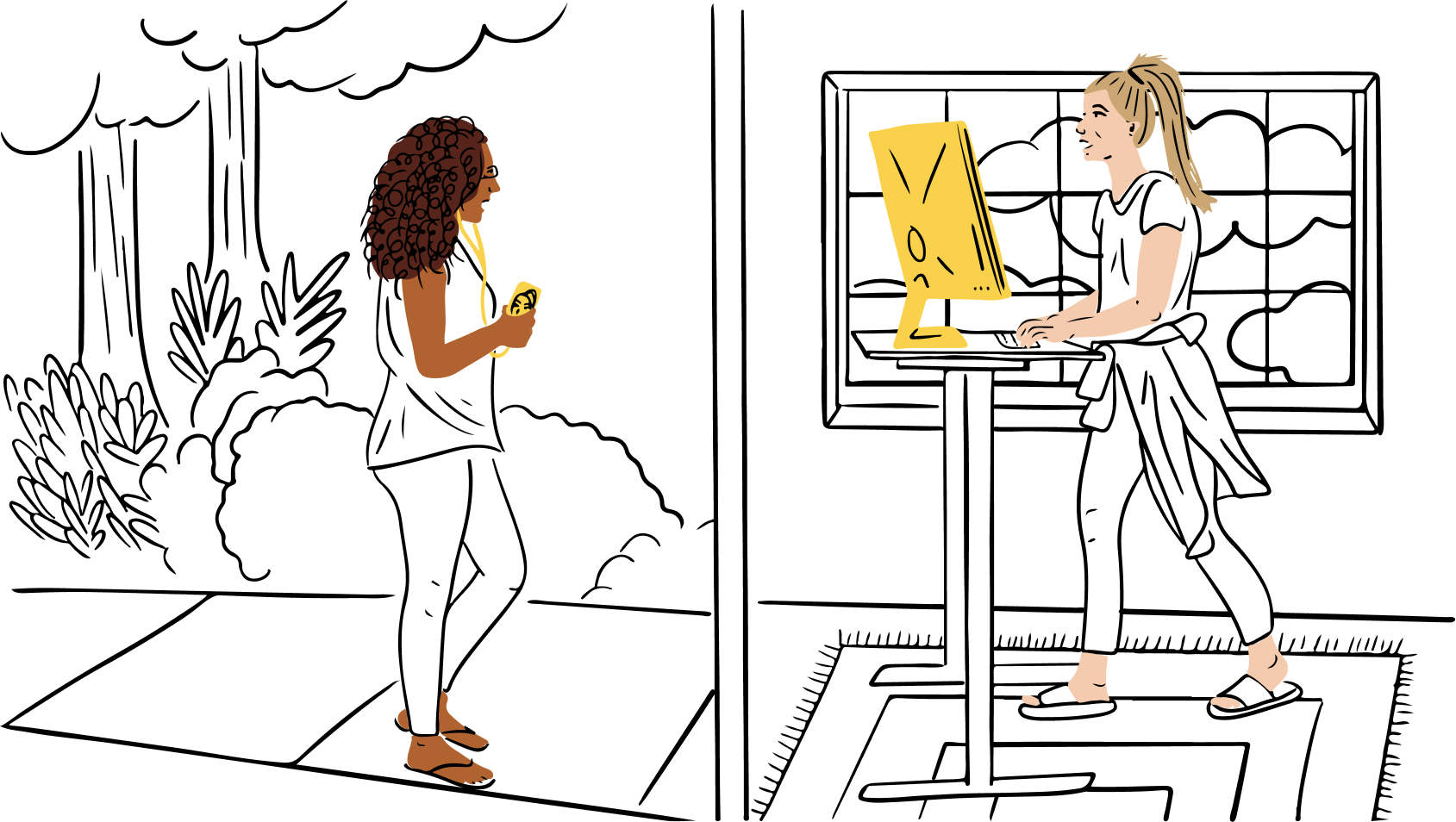To better understand the challenges facing knowledge workers today, we produced a study called “In search of lost focus” together with Economist Impact. The data we collected reinforced that, with all the distractions we can face in modern work, we need to figure out how to keep our teams productive.
Yet, supporting each other’s productivity can be tricky if you have team members working in different locations. It makes everything, from goal-setting to prioritization, more challenging, so we had to create systems to support our teams in those areas.
Our experience with Virtual First means we’ve had to become experts in staying productive remotely. To share what we learned, we’ve created this list of top tips that help our team stay productive.

1. Decide on when to collaborate
At Dropbox, we use core collaboration hours, four-hour blocks in which we hold all our meetings. By designating certain hours for calls, you can ensure everyone is available for some in-sync, regardless of their time zone.
Besides, we get Zoom fatigue just like everyone else, so minimizing meetings and having meeting-free hours has helped keep our brains fresh. It means we have time for deep work and collaboration.
We set different time blocks depending on the area to accommodate different time zones while still leaving enough overlap for us to meet no matter where we are.

We try to keep our communication asynchronous by default. We rely heavily on Slack and email for communication. But reducing in-person meetings may not suffice. Constant emails and private messages can be highly distracting, especially if your team tries to reply to them immediately. In fact, research shows it can take up to eight minutes to get back to a task after responding to a single instant message. We found that unproductive chat messages are the number one cause of lost focus overall.
What makes communication truly asynchronous is the expectation that you can reply on your own time, without any of the pressure that the name “instant message” might imply. That way, every team member knows they’ll have deep work hours each day.
Rules and guidelines like these can form helpful rituals that allow your team to establish their working rhythms.
2. Identify which environments help you and your team focus
By going Virtual First, our dispersed teams have greater control over their working environment, which helps enhance their productivity and well-being at work. We encourage our teams to figure out their working preferences by giving them a “Work-from-home worksheet.”
Everybody fills this out in advance, and then we meet to discuss how different team members prefer to work. This not only allows people to share their preferences, but it’s also a great team bonding exercise that helps everyone get to know each other.
After analyzing the answers from the worksheet, we’ve learned that four core factors affect productivity the most:
- Privacy: Can they concentrate more easily in a coffee shop where they’re surrounded by other people? Or do they get more done isolated in your home office?
- Background noise: Do they always like to play mood-boosting music while they work? Or do they prefer hushed silence, maybe with noise-canceling headphones to help?
- Comfort: Do they have an adjustable desk and a chair that supports their back? Do they prefer working from a standing position, and do they have the equipment to accommodate it? Do they have wrist support to prevent injuries?
- Design: Do they prefer to have personal office decorations like plants, art, or a colorful mug? Or do they want a bare desk without any potential distractions?
Helping your team design their working environment based on this self-knowledge will help them to feel relaxed, comfortable, and focused. But sometimes, even the best-equipped office and well-thought-out plan aren’t enough to keep us on track. We need help staying accountable.
3. Create clear task prioritization
In an interview with Dropbox, Oliver Burkeman, author of 4,000 Weeks: Time Management for Mortals, told us many people believe “There must be a way for you to be a hundred percent the perfect worker and a hundred percent the perfect person with a life outside work.” But as Burkeman notes, “Percentages don't work that way.”
He taught us that as our team works remotely, we work independently—just like in our asynchronous working hours. That means we need the discipline, knowledge, and tools to manage our time well. Prioritizing what to do at work and in our personal lives is the first tool to ensure our work is productive and impactful. Plus, it helps strike the healthy balance we need to feel focused and fulfilled.
For those of us who work remotely, prioritizing tasks is especially important because we can't always ask our colleagues for clarification in real time, and we depend on each other. Understanding that our work impacts other team members and, consequently, the result helps us in the process of task prioritization.
We also use the Eisenhower matrix. This involves categorizing tasks along a four-sided grid:
- Urgent and important: Do these tasks as soon as possible.
- Important but not urgent: Delegate these tasks.
- Urgent but not important: Schedule these tasks for later.
- Neither urgent nor important: Don’t focus on this.


If a team member has a non-essential meeting, they can delegate it to someone attending or use a tool to ensure they get the information they need. Meeting recordings and transcription software like Otter can outline a meeting's key takeaways and clarify if any parts are relevant to those who didn’t attend. Teach your team these skills by organizing workshops and providing resources on effective task management, such as our "How to prioritize at work worksheet."
With a plan in place and action items laid out, it’s time to organize your team’s communications.
4. Stick to what works
We find that encouraging our teams to create daily rituals helps them keep a consistent schedule and improves productivity, and recent studies support our findings. Here are a few types of rituals that have worked for us:
- Providing resources to support improved focus. In our Effectiveness Kit “Improve workday focus” exercise, we break down how to analyze distractions and stay away from them. The resource’s distraction scorecard is a great place to start, where your team can log all the distractions they encounter. Then, they can follow the guide to create small rituals like putting phones on Do Not Disturb for specific hours.

- Practicing meditation for psychological well-being. We recommend having brief, 60-second meditation sessions as you start some of your meetings. That puts everyone in the right mindset to be creative and open to ideas, not to mention it boosts our moods when we’re having a stressful day.
But there are even more ways to help your team’s productivity.
5. Invest in your team’s productivity
Sometimes, boosting productivity requires an upfront investment in time or money. That’s why we make sure our team has the tools they ask for. It doesn’t just save time. It makes them feel valued and heard.
For instance, when your team says, “There has to be a way to automate this,” it’s usually worth having them invest the time upfront to figure out how to do so. One way to do this is to create designated time slots for productivity-enhancing professional development. You can also organize workshops during those slots for your team to improve core skills they’d like to develop.
At Dropbox, we also use collaboration tools like Dash to find, access, and share our work materials from a single dashboard—a huge time-saver and productivity hack. To use it, you just type what you’re looking for, like “social media spend,” and it will search for relevant documents through all your folders, apps, and clouds.
It provides all the relevant documents and a summary based on your search term, pulling information from the documents and saving the time it would take for you to search through each one.

Just as important as tech tools, providing the physical equipment your team needs to work comfortably, like a second monitor, can be a game-changer for productivity. If you provide an allowance, like our Perks Allowance, your team can use it toward development courses or workplace equipment. That investment pays off when something as simple as a monitor means they can work faster.
6. Try self-regulated and “Pomodoro” breaks
In our study on focus and remote work, we found that 63% of remote workers feel like they have to be available all the time. We don’t want our distributed teams to feel that kind of pressure—one of the best parts of remote work is the freedom.
That’s why we use timeboxing, the practice of breaking up a task into discrete units of time and taking breaks in between. Taking breaks between tasks like this works so well for us, we even outlined our own timeboxing personal exercise to help others do the same.
Two of the most popular systems for taking breaks and timeboxing are self-regulated breaks and “Pomodoro” breaks. How people take breaks is very individual. However, a comparison of both by The British Psychological Society found that self-regulated breaks lead to lower levels of concentration and motivation.
At the end of the day, it’s up to personal preference, but we encourage people to try the Pomodoro Technique, where you work in focused intervals:
- 25 minutes of deep work
- 5 minutes of rest
- Repeat
- 15-30 minute break after four cycles
By structuring your breaks within a workday, your mind becomes more alert, and you become more conscious of time management. But it’s easier to make the most of your focus time when you’re in an environment that facilitates it.
7. Make a plan
We aren’t perfect. Just like 99% of Americans, we struggle with procrastination. But in our experience, one of the best ways to fight back is to make a solid plan for dissecting a project into smaller tasks. This has been especially important for our distributed team since every member manages their tasks and time.
Breaking a large task or piece of information into smaller ones is called chunking, and it can even help you remember everything you need to do. One study on chunking methods showed that breaking a large piece of information, like a number, into several smaller ones can help you remember the entire thing.
Here are some practical steps we use when we take on a large project:
- Define the goal: When your team starts the project, identify the intended effect of the project. Will it raise revenue? Reduce infrastructure costs? Create a groundbreaking new product?
- Set milestones: Map out the milestones the team will need to reach to achieve that goal. These can be anything from individual sales goals to team goals around building specific features for a product.
- Break it down: Now, you can get even more granular, dividing the milestones into smaller, actionable steps that each team member can take to achieve them.
- Prioritize: Focus on high-impact tasks first. We’ll dig into this even more later, but one thing to remember when prioritizing a team’s task is whether anyone is blocked. If one person’s progress depends on another completing a specific task, prioritize that one and give the person in charge of execution the help they need to complete it quickly.
Once your team has decided what they need to do and in what order, they can decide which meetings and tasks require breaks, and which you can batch one after the other. This technique is especially useful for creating efficient time blocks on your calendar. For some advice on when to batch your meetings and tasks together, and when to separate them with breaks, take a look at our batch and buffer meetings personal exercise.
Once you have a plan, it’s time to get a little granular by figuring out how you’ll execute it.
8. Create systems of accountability
We all need to hold ourselves accountable (or have someone else do it). It keeps us on track and helps us hit our goals. It’s especially helpful in a distributed environment, where oversight can be limited. Here are a few ways we’ve applied over the years that have worked for our team:
- Self-accountability: Have your team set personal rewards for achieving goals, such as treating themselves to something enjoyable (like dinner with a friend). Conversely, if they miss a deadline, they should have a plan to make up for it without overburdening themselves.
- Peer support: Set up accountability partners among colleagues. Regular check-ins can keep everyone motivated and on track.
- Managerial oversight: Plan regular progress reviews and set goals together. This provides guidance and external validation for employees.
In distributed workplaces, it's crucial to be intentional about these systems. In an interview with Dropbox for Remotely Curious, focus expert Professor Gloria Mark from the University of California, Irvine, added that remote workers should set emotional goals (how they want to feel on a given day) and project goals daily to stay accountable on a personal and professional level.
Your team can ask themselves questions like “What do I want to accomplish?” and “How do I want to feel?” as they start their days. Dr. Mark said, “Simply asking these questions at the beginning of the day helped people stay on track because it brought goals to the forefront and helped direct attention.”
9. Stay physically active
We’ve found that physical activity and exercise are highly effective in keeping us motivated and focused throughout the day. They not only make us feel more productive and energized but are also a great way for teams to connect over something healthy and fun. In an office, you’d get some natural activity moving between rooms, but when working remotely it’s difficult to find time for physical activity.
That’s why we love to schedule “Meet & Move” meetings, where we encourage the participants to move around a bit as we chat. It prevents us from multitasking and gives us the opportunity for some physical activity as we work.
But there are some considerations. First, you’ll want to pick a meeting that’s well-suited to your plans. If you’re giving a presentation or using any visuals, moving around is going to be tough. Instead, a more casual meeting or one-on-one could be a better fit.
You should also plan your route for somewhere without too much background noise, like a quiet park instead of the sidewalk of a busy street. You can even pace around your own home for quiet and convenience. No matter how you do it, a little moving around can have some serious benefits—one study found that just an hour of exercise a week can improve physical health and work performance.

While the Wellness Weeks only happen once a year, the sessions can teach Dropboxers to make physical activity a more consistent part of their lives. Here are a few of our favorite ways to keep moving year-round:
- Walking meetings: Turn a Zoom call into a walking meeting to get moving while you discuss.
- Active workstations: Consider using a standing desk or an under-desk walking pad. Dropbox, for instance, encourages active desk setups and helps cover the cost with our Perks Allowance as part of its perks allowance.
- Daily walks: If your team works from home, you can encourage them to take a walk to bookend their days, simulating a commute.
- Start a class: Encourage your team to book that mid-day fitness class and add some movement to their days.
To help our team make the most of their physical activity time, we encourage them to plan it around their daily energy levels. Team members who find physical activity energizing can do it before they do their deep work. Those who find it draining might want to schedule it for when their heaviest work is done.
We created a “Manage your energy levels” exercise as part of our Well-being Kit to help people figure out what works best for them. You and your team can use it to chart out the hours during which you feel especially high or low energy and which tasks fill or drain your energy levels. Armed with that information, your team can design their days around their energy levels to make sure they’re doing their most complex tasks when they have the energy to handle them.
10. Regularly self-evaluate
At Dropbox, we like to self-evaluate our productivity by reviewing our calendars and assessing how well we spend our time. We flag meetings and tasks as red, yellow, or green to indicate whether it was a bad, okay, or good use of our time. We then use that information to evaluate how we could be more productive. That helps our teams stay on track and make sure they’re using their time as effectively as possible.
Another excellent productivity hack is identifying when you're in a flow state—characterized by deep focus and efficiency—and evaluating the conditions that helped you get there. This can be a little tough to do, but one study shows that it can be easier to achieve a flow state if you minimize distractions and set clear goals.
You could even challenge your team to note which conditions and goals helped them achieve their flow states in the last week. Then, hold a meeting where you can do a team-building activity revealing the differences and similarities in how each member reaches peak concentration.
Remote productivity looks different for everyone
Helping your team hit peak productivity across dispersed locations can look different on an individual level—we know it does for our team. That’s why you need to get to know your team and arm them with a wide variety of strategies to see what works best for each person.
Many of these tips center around helping your team achieve and maintain focus, but as you can see, those aren’t the only ways to help do impactful work.
For more tips on improving productivity and having an impact, listen to our Remotely Curious Podcast: Focus, featuring focus expert Professor Gloria Mark.
